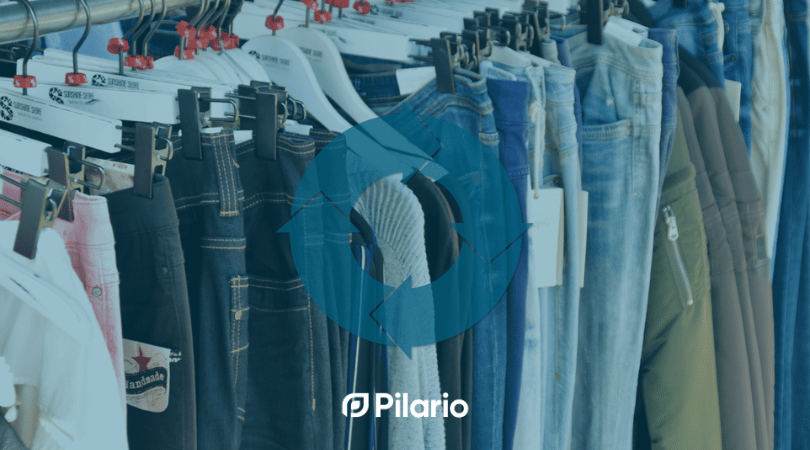07/03/2024
The Ultimate Guide to Understanding Product Environmental Footprint (PEF) in the EU
Unlock the EU's Product Environmental Footprint secrets: Drive sustainable choices and green innovation.

15 March 2024
The EU Product Environmental Footprint (PEF) initiative by the European Union marks a shift towards enhancing sustainable practices within its member states. The European Commission launched this initiative, which aims to integrate environmental factors into the design and production processes of products.
The importance of PEF in today’s environmentally conscious world is substantial. With an increasing number of consumers, policy makers, and corporations becoming alert to the pressing environmental issues our world faces, there’s an escalating demand for transparent, comparable, and trustworthy data regarding the ecological performance of products. By offering a uniform framework for assessing these impacts, the PEF plays a crucial role in guiding business strategies and influencing consumer behavior towards more sustainable choices.
Table of Contents:
1. Understanding the Product Environmental Footprint EU Framework
2. Navigating PEF Compliance for Businesses
3. PEF and Sustainability: Beyond Compliance
4. PEF’s Role in International Trade
6. Future Directions and Developments in PEF
7. Conclusion
Introduced in 2013 by the European Commission, the Product Environmental Footprint (PEF) method was a key element of the “Building the Single Market for Green Products” initiative. This initiative aimed to create a common method for assessing and communicating the environmental performance of products, companies and services.
Since the launch of the Product Environmental Footprint EU (PEF) initiative, it has undergone numerous assessments involving varied stakeholders from business sectors, NGOs, and academic institutions. Currently, the PEF is in an important development stage known as the ‘transition phase.’ This stage serves as an extended pilot phase with the aim of refining and perfecting the methodology. Set to last until the end of 2024, participation in adhering to PEF standards remains voluntary during this time.
The European Commission is actively working on detailing the PEF’s specific Product Category Rules (PEFCRs), which are essential in customizing the footprint measurement guidelines to suit distinct industry needs.
These ongoing efforts are crucial in defining the ultimate framework of the PEF methodology. If you want to learn more about the PEFCR definitely check out our comprehensive guide here.
As mentioned in our comprehensive PEF guide, the methodology behind the Product Environmental Footprint (PEF) is founded on the principles of life cycle assessment (LCA). This approach analyzes the environmental impacts associated with all the stages of a product’s life cycle stages from its inception to its disposal — encompassing the extraction of raw materials, manufacturing, distribution, usage, and eventual disposal. The PEF emphasizes a broad spectrum of environmental impact categories such as climate change impacts, water consumption, resource depletion, and pollution, ensuring a thorough evaluation of a product’s ecological footprint.
The European Commission is at the forefront of the PEF initiative’s progression and real-world application. It establishes the foundational regulations, outlines clear guidelines, and delivers the essential tools for the execution of detailed PEF analysis. Additionally, the European Commission plays a crucial role in aligning the PEF’s methodologies with the European Union’s overarching environmental strategies and ambitions.
Moreover, the Commission promotes unity and cooperation across different industries to boost the integration of the PEF into existing environmental policies and market frameworks. This collaborative approach aims not only to advance the adoption of the PEF within the EU but also to inspire a global shift towards standardized environmental product declarations.
Implementing the EU Product Environmental Footprint (PEF) goes beyond simple regulatory adherence – it represents a dedication to sustainable progress. Companies that will incorporate the PEF standards into their business operations can achieve significant environmental improvements, while also boosting their brand image, consumer confidence, and competitive advantage in the market.
Businesses should approach PEF compliance as a part of their overall agenda. This connection helps in aligning environmental objectives with corporate goals, fostering more integrated and effective sustainability measures. For example, reducing the environmental footprint of a product might also lead to resource savings, cutting down costs – or it can help as an input for your productization process.
The detailed insights provided by the PEF framework enables businesses to pinpoint areas beyond regulatory compliance but also opportunities for innovation in product design, materials, and processes. This forward-thinking in environmental stewardship can lead to the development of new, more sustainable products and services, opening up new markets and customer segments.

The European Union’s Product Environmental Footprint (PEF) is not only reshaping sustainability practices within its borders but can also bring a significant impact on international trade. Non-EU companies that export to the region, as well as global supply chains will certainly be affected by the PEF model, making compliance a key factor in maintaining market access.
Non-EU exporters must understand that PEF compliance can become a market access requirement, certainly for specific industries. Products that meet the PEF criteria may be viewed as more eco-friendly by European consumers and procurement officials, giving them a competitive advantage in the EU market. Therefore, non-EU businesses should sync their environmental assessments with the PEF framework to maintain or improve their market presence. Of course, this depends on how the PEF model looks after the current transition phase.
PEF Alignment: Non-EU companies should consider aligning their product assessments with the future framework. This may involve adopting PEF methodologies, metrics, and reporting practices.
Collaborative efforts in Supply Chains: Collaborate with partners within the supply chain to ensure that upstream processes and inputs are correctly measured. Such efforts can aid in recognizing and mitigate environmental impacts across the supply chain.
Capacity building and knowledge sharing: Investing in training and resources to understand the future PEF requirements is vital. Closing partnerships with EU-based firms and/or sustainability consultants to bridge knowledge gaps.
Certification and Verification: Securing a third-party certification for PEF adherence not only boosts a company’s legitimacy but also eases the path into the market.
As the Product Environmental Footprint (PEF) initiative evolves, it is crucial for both businesses and policymakers to stay updated on its changing standards and implications. Understanding the future directions and developments in the PEF model is essential for effective strategic planning and promoting sustainable growth.
As mentioned before, the PEF is currently in its transition phase, an essential period of development acting as a prolonged pilot phase aimed at enhancing and finalizing the methodology. Scheduled to continue until the end of 2024, adherence to PEF standards is still voluntary at this time.
The input of various stakeholders, including corporations, non-profits, and industry groups, is instrumental in shaping the future of PEF standards. Engaging in public discussions, contributing to pilot initiatives, and networking within sustainability forums can provide critical perspectives and help steer the trajectory of PEF policies. This collaborative effort not only enriches the development of PEF but also fosters shared solutions to environmental issues.
In conclusion, adopting the EU Product Environmental Footprint (PEF) method is more than meeting regulations; The path to PEF compliance is challenging, requiring thorough life cycle evaluations and precise data management. Yet, the advantages surpass mere compliance, unlocking environmental improvements and promoting innovations that open up new sustainable market avenues.
The influence of this, is still unfolding, but it has the potential to affect non-EU exporters. To retain EU market access, these exporters might need to adapt to these evolving standards. This adaptation could involve understanding PEF procedures, collaborating across supply chains, and possibly seeking certification.
As the method evolves, businesses must remain informed and flexible. While the EU Product Environmental Footprint is currently in its transition phase, which is set to last until the end of 2024, participation in adhering to PEF standards remains voluntary during this time. The European Commission is actively working on detailing the PEF’s specific Product Category Rules (PEFCRs), which are essential in customizing the footprint measurement guidelines to suit distinct industry needs.
Keep in mind, the journey towards incorporating sustainability into core business practices through the product environmental footprint method does not have to be undertaken alone. Solutions like Pilario simplifies the path of navigating the complexities of PEF and PEFCR. With Pilario’s specialized SaaS solution, companies can access predefined LCA models designed specifically for a range of different industries. Pilario not only seeks to ease the path to PEF compliance but integrates sustainability as a core facet of your business strategy, fostering a greener, more sustainable future.
Ultimately, the PEF is more than just compliance; it’s a strategy for integrating sustainability into core business practices, combining environmental goals with business objectives to create a greener, more sustainable future.

07/03/2024
Unlock the EU's Product Environmental Footprint secrets: Drive sustainable choices and green innovation.

11/08/2023
Learn about the new French environmental labeling law for textiles.

22/09/2023
Unlock sustainable success with LCA, PEF, and PEFCR. Understand environmental impacts, gain trust, and comply with EU standards effortlessly.

08/03/2024
Discover how to navigate and benefit from Product Environmental Footprint Category rules in our in-depth guide.